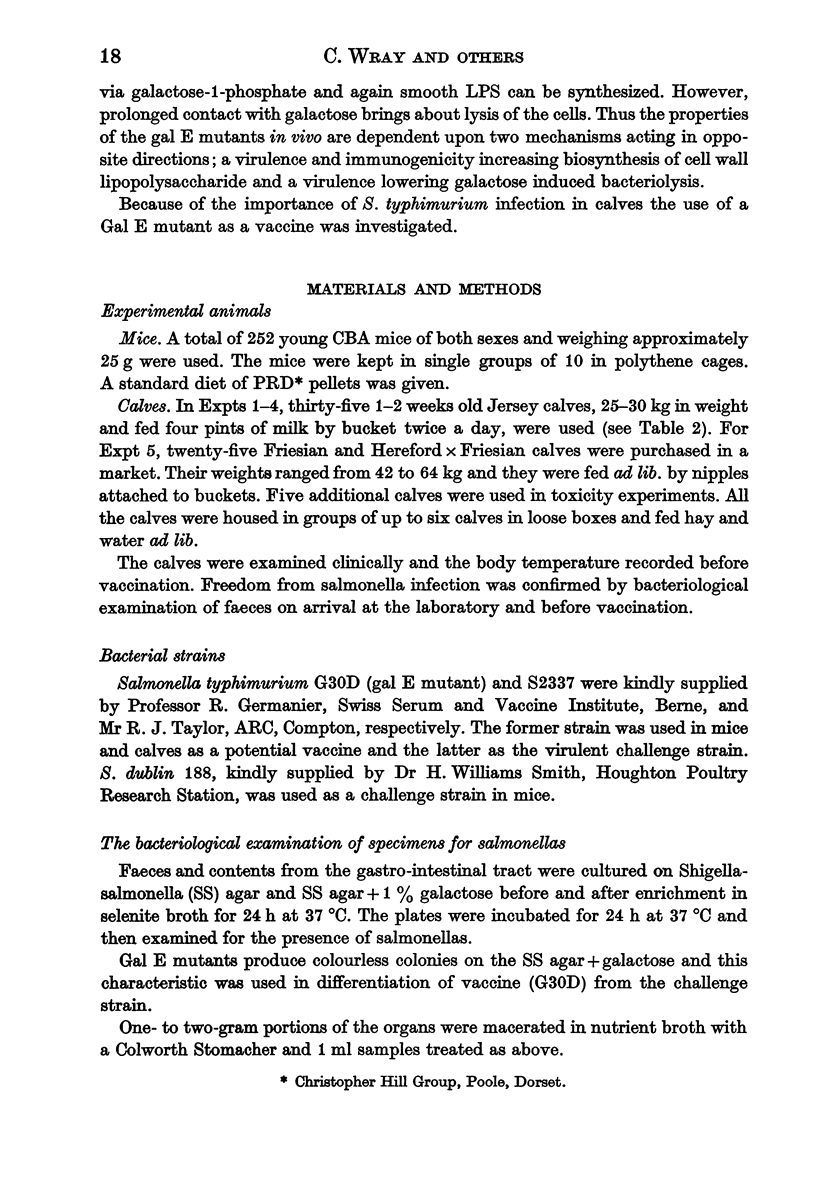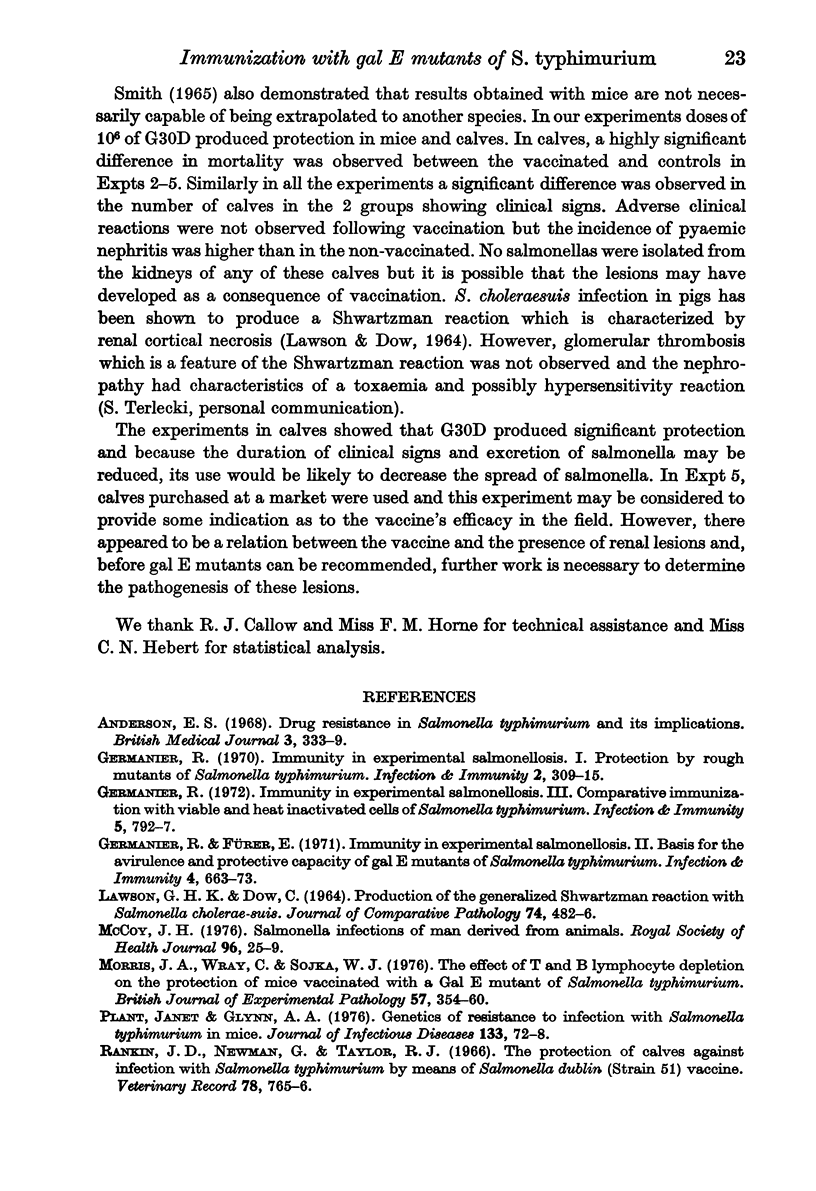Abstract
A galactose epimeraseless (gal E) mutant of Salmonella typhimurium was investigated in mice and calves for its suitability as a live vaccine. In mice, a very highly significant difference in the mortality rates was observed when vaccinated and non-vaccinated animals were challenged with virulent strains of S. typhimurium and S. dublin. In calves, doses of 10(6) and above of gal E mutant injected subcutaneously provided highly significant protection both in terms of mortality and prevalence of symptoms when calves were challenged orally with S. typhimurium. However, there appeared to be a relation between the vaccine and the presence of renal lesions and before gal E mutants can be recommended, further work is necessary to determine the pathogenesis of these lesions.
Full text
PDF







Selected References
These references are in PubMed. This may not be the complete list of references from this article.
- Anderson E. S. Drug resistance in Salmonella typhimurium and its implications. Br Med J. 1968 Aug 10;3(5614):333–339. doi: 10.1136/bmj.3.5614.333. [DOI] [PMC free article] [PubMed] [Google Scholar]
- Germanier R. Immunity in Experimental Salmonellosis I. Protection Induced by Rough Mutants of Salmonella typhimurium. Infect Immun. 1970 Sep;2(3):309–315. doi: 10.1128/iai.2.3.309-315.1970. [DOI] [PMC free article] [PubMed] [Google Scholar]
- Germanier R. Immunity in experimental salmonellosis. 3. Comparative immunization with viable and heat-inactivated cells of Salmonella typhimurium. Infect Immun. 1972 May;5(5):792–797. doi: 10.1128/iai.5.5.792-797.1972. [DOI] [PMC free article] [PubMed] [Google Scholar]
- LAWSON G. H., DOW C. PRODUCTION OF THE GENERALISED SHWARTZMAN REACTION WITH SALMONELLA CHOLERAE-SUIS. J Comp Pathol. 1964 Oct;74:482–486. doi: 10.1016/s0368-1742(64)80054-0. [DOI] [PubMed] [Google Scholar]
- McCoy J. H. Salmonella infections of man derived from animals. R Soc Health J. 1976 Feb;96(1):25–30. doi: 10.1177/146642407609600109. [DOI] [PubMed] [Google Scholar]
- Morris J. A., Wray C., Sojka W. J. The effect of T and B lymphocyte depletion on the protection of mice vaccinated with a Gal E mutant of Salmonella typhimurium. Br J Exp Pathol. 1976 Jun;57(3):354–360. [PMC free article] [PubMed] [Google Scholar]
- Robson H. G., Vas S. I. Resistance of inbred mice to Salmonella typhimurium. J Infect Dis. 1972 Oct;126(4):378–386. doi: 10.1093/infdis/126.4.378. [DOI] [PubMed] [Google Scholar]
- SMITH H. W. THE IMMUNIZATION OF MICE, CALVES AND PIGS AGAINST SALMONELLA DUBLIN AND SALMONELLA CHOLERAE-SUIS INFECTIONS. J Hyg (Lond) 1965 Mar;63:117–135. doi: 10.1017/s0022172400045022. [DOI] [PMC free article] [PubMed] [Google Scholar]


